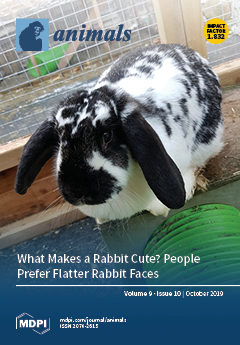Sixty neonatal Hu lambs were weaned at either 21 (n = 30) (early weaning, EW) or 49 days (n = 30) of age (control, CON). The starter intake and body weight (BW) of lambs was recorded weekly from birth to 63 days of age. Diarrhea rate of lambs was measured from birth to 35 days. Six randomly selected lambs from each treatment were slaughtered at 26, 35, and 63 days of age, respectively. Ruminal pH, NH
3-N, and volatile fatty acid (VFA) concentration, as well as serum parameters including immunity, antioxidant status, and inflammatory parameters from randomly selected lambs from each treatment were measured. There was no difference in BW at birth and day 21 between the two groups of lambs (
p > 0.05). However, BW of the lambs in the EW group was significantly lower than those in the CON group (
p < 0.01) from 28 to 49 days of age. Average daily gain (ADG) of the lambs in the EW group was significantly lower than those in the CON group (
p < 0.01) at three weeks after early weaning. Starter intake of the lambs in the EW group was obviously higher than that in the CON group (
p < 0.01) from day 28 to 49. In addition, the diarrhea rate was significantly higher than that in the CON group from day 5 to 14 after weaning (
p < 0.01). The EW group had heavier carcasses (
p < 0.01) and rumen relative to whole stomach weights (
p < 0.01). Rumen pH was increased by age (
p < 0.01) and was not affected by early weaning (
p > 0.05). Early weaning decreased abomasum relative to whole stomach weight (
p < 0.01) and increased total VFA concentrations (
p < 0.01) at day 26. There was no difference in lambs’ immunity and stress indicators (
p > 0.05). The results indicated that lambs weaned at 21 days of age had decreased ADG and higher diarrhea rate, although the overall immunity was not compromised. Long-term study is needed to further validate the feasibility of early weaning strategy in lambs.
Full article






